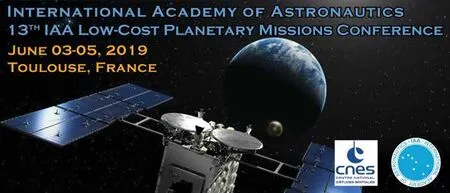XUE Huifeng Attended the IAA Spring Meetings
2019-05-15CAASSE
XUE Huifeng, Editor-in-Chief of the Aerospace China journal, attended the IAA Spring Meetings in Paris from March 24 to 28, 2019 including the IAA fourth committee meeting, the IAA award dinner and the IAA symposium on Moon farside.As a member of IAA, Professor XUE introduced the Satellite Integrated Network Project at the fourth committee meeting of which the Vice Chairman of the committee Rene Laufer hosted and more than 30 committees attended.
The project identified the current situation of repeated construction of satellite network platforms, unshared data, the lack of universal network protocols, and proposed the establishment of a global satellite governance system, data sharing platform,unified network protocol, along with proposed procedures.Experts at the meeting agreed with the significance of the project as well as its difficulty. The project was approved and will be officially published at the IAA Autumn Meeting after the new application submitted with certain project members.
As the information age comes with the third industrial evolution, humankind is experiencing further development and reform of information technology. Information has become one of the most essential driving forces for social and economical development. Space industry, being one of the most challenging studies in the high-tech information field, sees a new picture of the universe.
Bottlenecks have occurred after ground networks experienced extremely rapid growth in the last decades that brings restrictions on relevant technology. Faced with the limited space information resources, unbalanced construction domains and incomplete regulations and rules, global cooperation is urgently requested. The construction and management of a global space information network are faced with restrictions and challenges,calling for a new approach to create global attention and cooperation.
To be precise, there are three statements expressing the necessity of developing the global space information network.Firstly, space information network exploration is of great significance for technology development of mankind. The research of networks is fundamental for space studies, including the acquire-ment of multi-dimension sophisticated space information, the transmission and processing of the data, and information sharing and service. Space study has become one of the most advanced and innovated multi-discipline areas of research, creating great potential growth for information services and an innovative industry. Secondly, the space information network has become a driving force for social and cultural advancement of mankind.Several astronauts have stated that there is no borderline on Earth from the perspective of space. Currently, there are 12 countries that are capable with space launch, with 50 countries which have developed their own satellites. More than 250 astronauts have worked and lived in space to help explore eight planets in the solar system. In order to enhance exploration in deeper space, global cooperation and communication are indispensable. From the technical aspect, ground stations from different countries could coordinate and support to provide the necessary assistance for future deep space navigation. Finally,the construction of the information network is the key to promote peace and development for humankind. Information misuse,an armament race and space conflicts are occurring between countries, chasing for the core technology of space information. A stable space information network could maintain a peaceful environment for human evolution. Stable growth in the space field is a win-win opportunity for countries to make good use of it. Peace and development is like air and sunshine to mankind. We cannot live without air and sunshine, so as with peace and development.

IAA symposium on Moon farside Photo: GAO Yufeng
For all these reasons, we have to strive to secure the Global Space Information Network Community, a Satellite Integrated Network. This concept has three main parts: the space backbone network, the space access network and the ground comprehensive network. The backbone network consists of GEO satellites while the access network consists of MEO and LEO satellite constellation systems. The space network satellites could navigate, telecommunicate and sense as a comprehensive system. Information and data are collected and transmitted from the space network to the ground, creating a three-dimensional network around the Earth.
The main principle of the network is to develop a space information network on the basis of the principles of peace, security, openness and cooperation, aiming at establishing a universal standard, creating a platform for data sharing system, and unifying the transmission protocol from space to ground. The network could create a new approach requiring a win-win, sharing and equity target for the Space Information Network Community. The network could create a new platform for countries globally no matter if rich or poor, no matter if strong or weak.Inequality and imbalance would be eliminated in constructing and exploring space. The network could create a new proposal for promoting connectivity and coordination for technology and resources.
The ideal outcome of the project would involve all the countries in the world participating and constructing the space network. Anywhere on Earth could have accessibility to it as there are no geographical barriers for a space-ground network.The space information network will ensure a stable and orderly development for all the participating institutions. (CAASSE)

杂志排行
Aerospace China的其它文章
- Application of Genetic Algorithm in Estimation of Gyro Drift Error Model
- Numerical Simulation of Unsteady Flow of Reentry Capsule
- Analysis and Solution of Multipath Effect on Wireless Communications of Launch Vehicle
- CFOSAT-1 Realizes First Joint Observation of Sea Wind and Waves
- Application Advantages of Staring Area Imaging Technology (SAIT) for Microsatellites
- Analysis of China's Nano andMicrosatellite Industry Development
